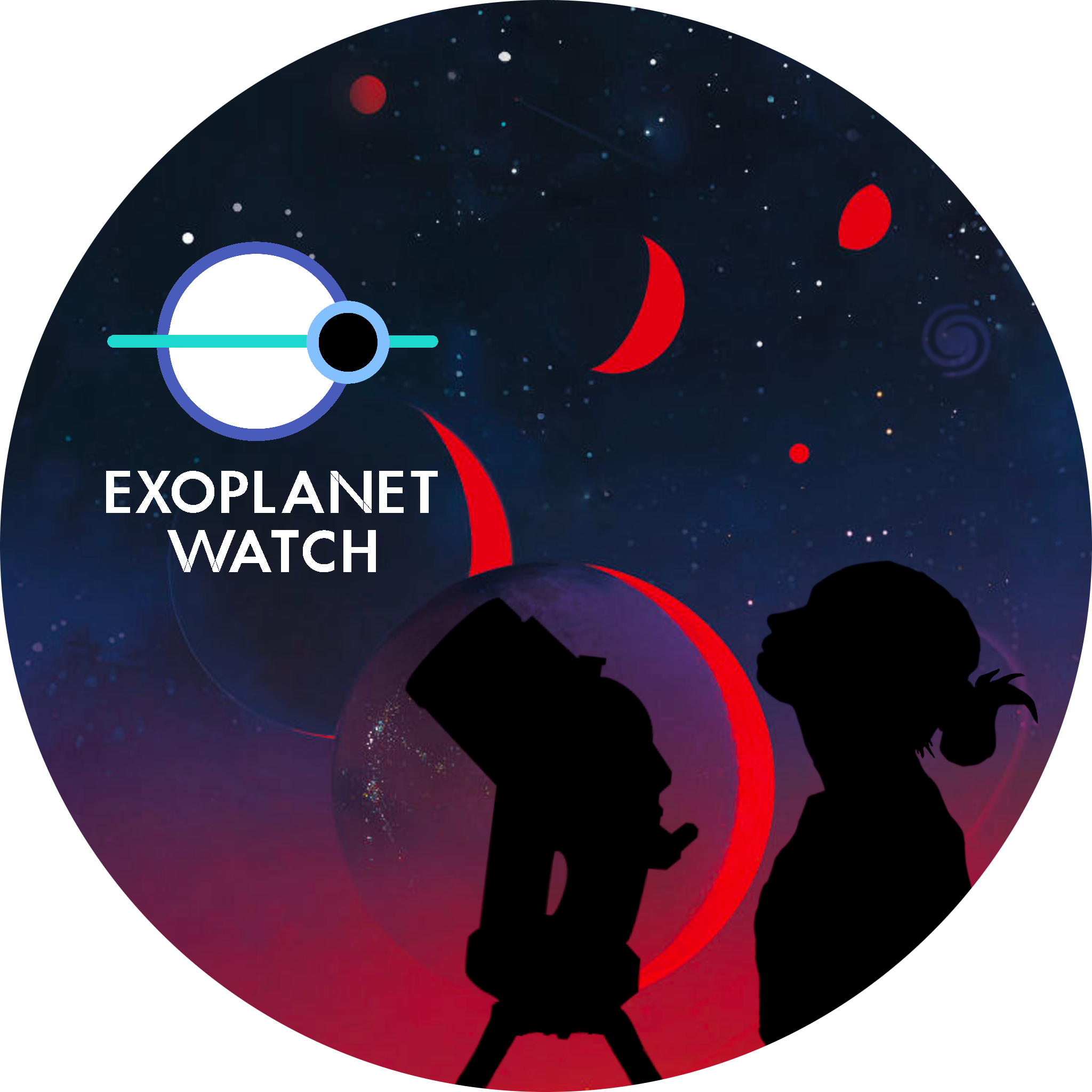What is Exoplanet Watch?
Welcome! We're glad you're here!
Everyone (yes, YOU!) can help NASA study exoplanets — planets beyond our solar system. Already sold? Jump to How to Get Started. Need more context? Keep reading...

No telescope? No problem! Anyone in the world can checkout free data directly to your inbox, and/or use remote robotic telescopes.
Completely new to exoplanets? See our Background Information for some simple, but foundational, science explanations. Still have questions? Just ask!
Ready to study some exoplanets? See our How to Get Started checklist.
By studying exoplanets, you can help answer NASA's three big science questions about the universe:
- How does the universe work?
- How did we get here?
- Are we alone?
When you look up into the night sky, do you wonder what's out there beyond our solar system? Come help scientists learn more about the exoplanets in our galaxy!
Anyone can participate! The Watchers community teaches you everything you need to know step by step. No telescope? No problem! You can use our robotic telescopes to request data to analyze even on a mobile device.
When an exoplanet orbits in between its star and the Earth, this "micro-eclipse" blocks a small percentage of the starlight. Graphing the brightness over time, there will be a dip in the "light curve" which can oftentimes be less than 1%! Our open-source, cloud-based software, EXOTIC, takes in your raw images/data (from your telescope or ours), then "reduces" them into a light curve to find that dip.
You'll be able to upload your results into our NASA pipeline to help scientists learn more about that exoplanet system. A unique identifier makes sure you get credit for your observations whenever scientists use your data. As of March 2024, Exoplanet Watchers have studied over 400 different exoplanets, and created over 6,000 light curves.
With your help, Exoplanet Watch will:
- Make the best use of larger telescopes — more accurately predict the next transit event for follow-up with space-based telescopes (e.g., the Hubble Space Telescope and the James Webb Space Telescope) or large ground-based telescopes
- Discover new exoplanets — using transit timing variations to infer the existence of an additional exoplanet in a extrasolar system
- Monitor stellar variability — changes in a star's brightness caused by spots (dark regions) and plages (bright regions) of an exoplanet's host star can be measured
- Confirm new exoplanets — help confirm the existence of newly discovered exoplanets
As an Exoplanet Watch citizen scientist, you will:
- Learn how science is done from beginning to end, collecting data, processing it, sharing it, and reading papers that incorporate it
- Observe transiting exoplanets (if you have a telescope), or request data from other people's telescopes (if you do not) using our data checkout system
- "Reduce" and analyze your data, using our free, open-source EXOTIC software, to create your own transiting exoplanet light curves
- Upload your results to the American Association of Variable Star Observers (AAVSO) Exoplanet Database
- Have your light curve included on the Exoplanet Watch's Results webpage
- If your observations or light curves are used in a scientific paper, your name will be listed as a co-author on the paper, and you will get credit for participating in scientific research
- Meet astronomers who study exoplanets professionally and collaborate with other citizen scientists in our bi-weekly meetings and on our Slack
Sounds great! How do I participate?
Head over to our How to Get Started page to learn more and get started!
Also:
- Subscribe to our Monthly Newsletters, which include exoplanets to observe, new project features, information on topics that will be covered in our bi-weekly meetings, a featured member of the month and astrophoto of the month, and links to exoplanet resources.
- Learn more about the science behind Exoplanet Watch from our Background Information and Resources
- Contact us on Slack or via email if you have questions that aren't covered in our Frequently Asked Questions page
We're always open to suggestions on how to make Exoplanet Watch a more interactive and inclusive project and community. You can comment anonymously via our feedback form.
NASA's Universe of Learning materials are based upon work supported by NASA under award number NNX16AC65A to the Space Telescope Science Institute, working in partnership with Caltech/IPAC, Center for Astrophysics | Harvard & Smithsonian, and the Jet Propulsion Laboratory.
This project complies with the Paper Reduction Act via Office of Management and Budget Control Number 2700-0168.





